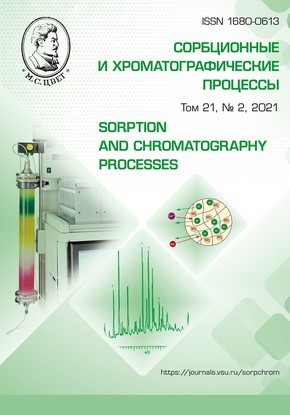Chromatographic analysis of the nucleotide composition of the secretions of the large human salivary glands at different age periods of postnatal ontogenesis
Abstract
Nucleotides play a key role in many biochemical and intracellular processes. They are coenzymes and are involved in the carbohydrate metabolism and lipid synthesis. Saliva contains adenyl and guanyl nucleotides, as well as other biologically active substances. The aim of the study was the investigation of the content of the nucleotide composition of the secretion of the major salivary glands in practically healthy donors of different age groups. The study involved 60 apparently healthy volunteers who were divided into
6 age groups: Group 1 – 5-8 years old, Group 2 – 9-14 years old, Group 3 – 15-19 years old, Group 4 – 20-35 years old, Group 5 – 36-60 years old, Group 6 - 61 years old and above.
The nucleotide composition of the saliva of the major salivary glands was analysed by column chromatography using an automated FPLS® System (Sweden). The identification of free nucleotides was carried out using commercial nucleotide preparations. The amount of eluted nucleotides was determined by measuring the area of the peaks (%).
The study revealed that the free nucleotides in the secretions of the major salivary glands are eluted in the form of 6 different fractions: adenosine, adenosine monophosphate, adenosine diphosphate, guanosine diphosphate, adenosine triphosphate, and guanosine triphosphate. The largest area in the secretions of the major salivary glands has a peak formed by the excretion of adenosine diphosphate, and the minimum is the peaks formed by the excretion of guanosine diphosphate and guanosine triphosphate in all age groups.
For the assessment of the metabolism of adenyl nucleotides, the index of "phosphate potential" was calculated, which reflects changes in the content of high-energy phosphates in the examined donors. Over the course of the study, the energy charge of the cell was determined for the assessment of the energy processes in the body.
The secretion of the salivary glands is a biological material available for research, which can be used in clinical and diagnostic practices. The nucleotide composition of the secretions of the salivary glands is an important indicator of the physiological state of the body, reflecting energy metabolism at different stages of postnatal ontogenesis.
Downloads
References
Keshishyan E.S., Berdnikova E.K., Le-chashchij vrach, 2004, No 1, pp. 53-54.
Ohyanagi H., Nishimatsu S., Kanbara Y. et al., J. Parenter Enteral Nutr., 1989, Vol. 13, No 1, pp. 51-58.
Carver J.D., Am. J. Clin. Nutrition, 2003, Vol. 77, No 6, pp. 1550-1554.
Uauy R., Dietary nucleotides and re-quirements in early life, New York, Raven Press, 1989, pp. 265-280.
Singhal А., Macfarlane G., Macfarlane S. et al., Am. J. Clin. Nutrition, 2008, Vol. 87, No 6, pp. 1785-1792.
Eltzschig H.K., Sitkovsky M.V., Robson S.C., N Engl J Med., 2012, No 367, pp. 2322-2333.
Myachina O.V., Zujkova A.A., Pashkov A.N., Vestnik novyh medicinskih tekhnologij, 2017, Vol. 24, No 4, pp. 85-88.
Prohorov M.YU., Tiunov M.P., SHakalis D.A., Laboratornoe delo, 1977, No 9, pp. 535-536.







